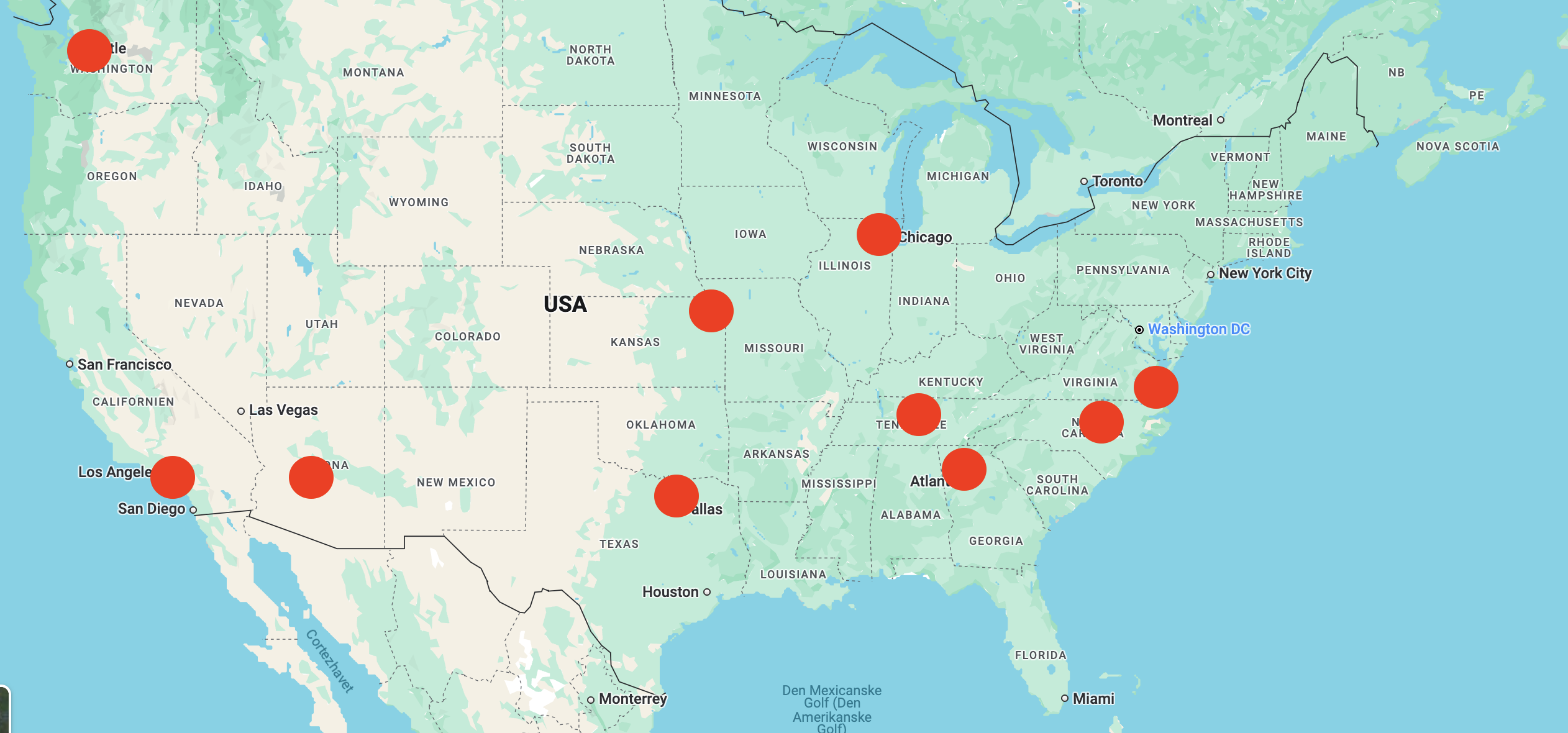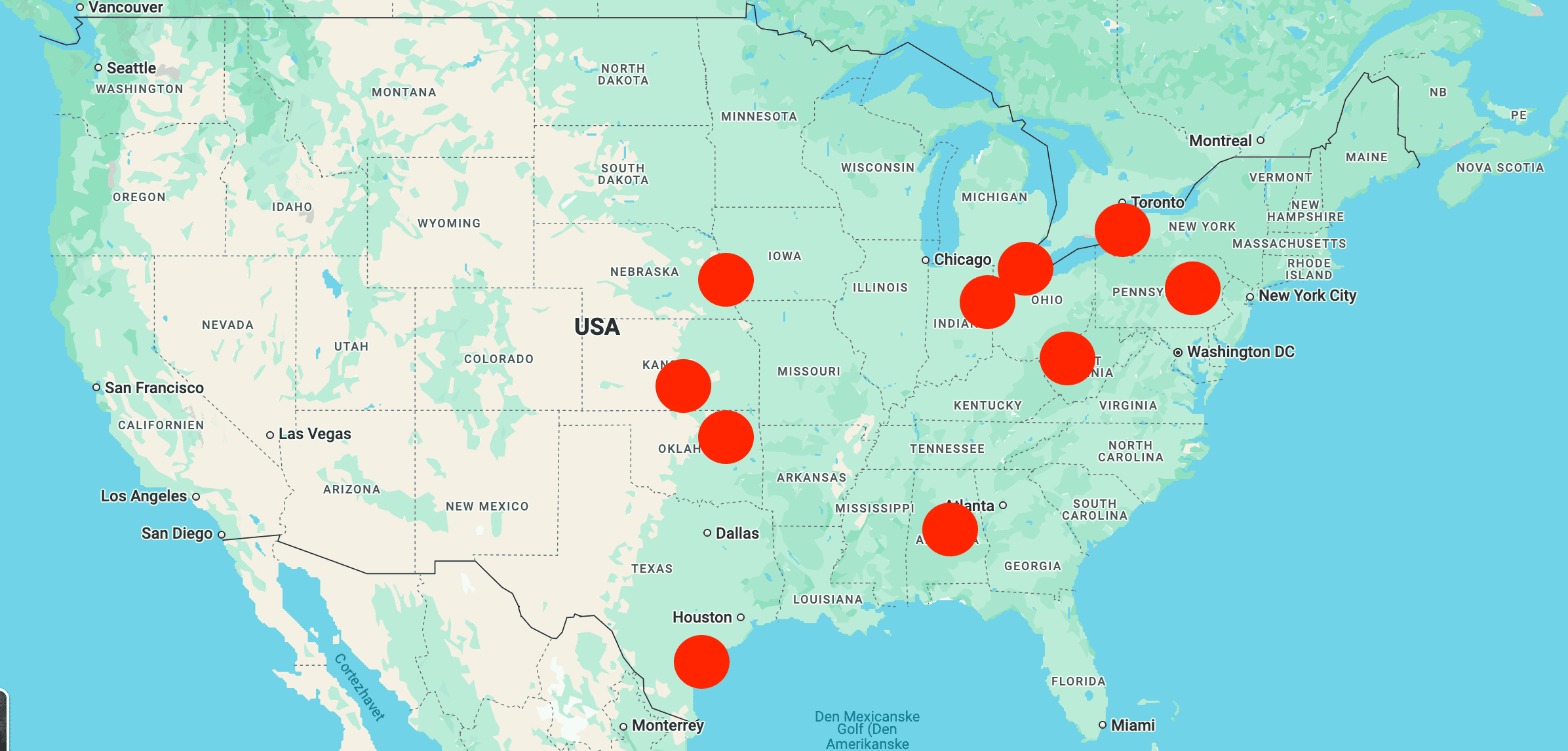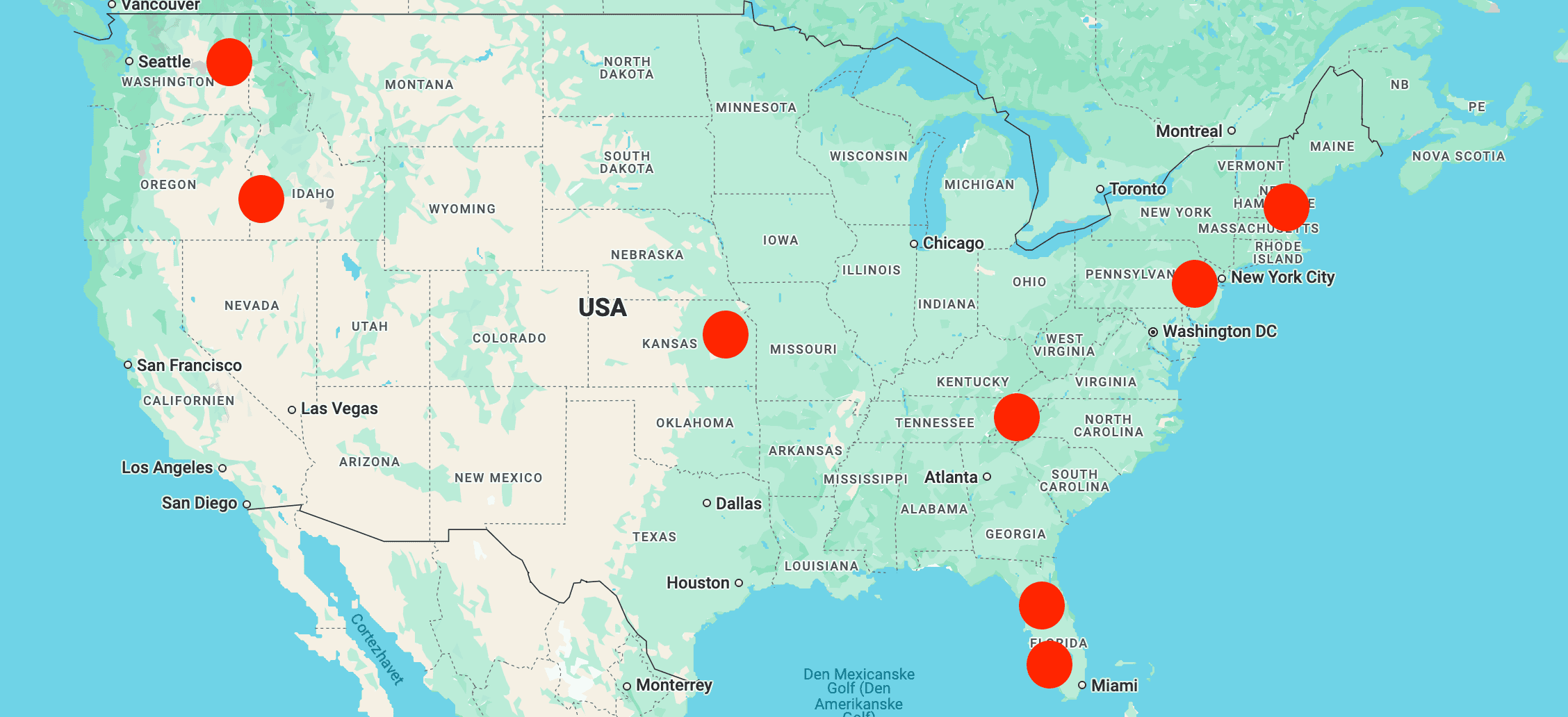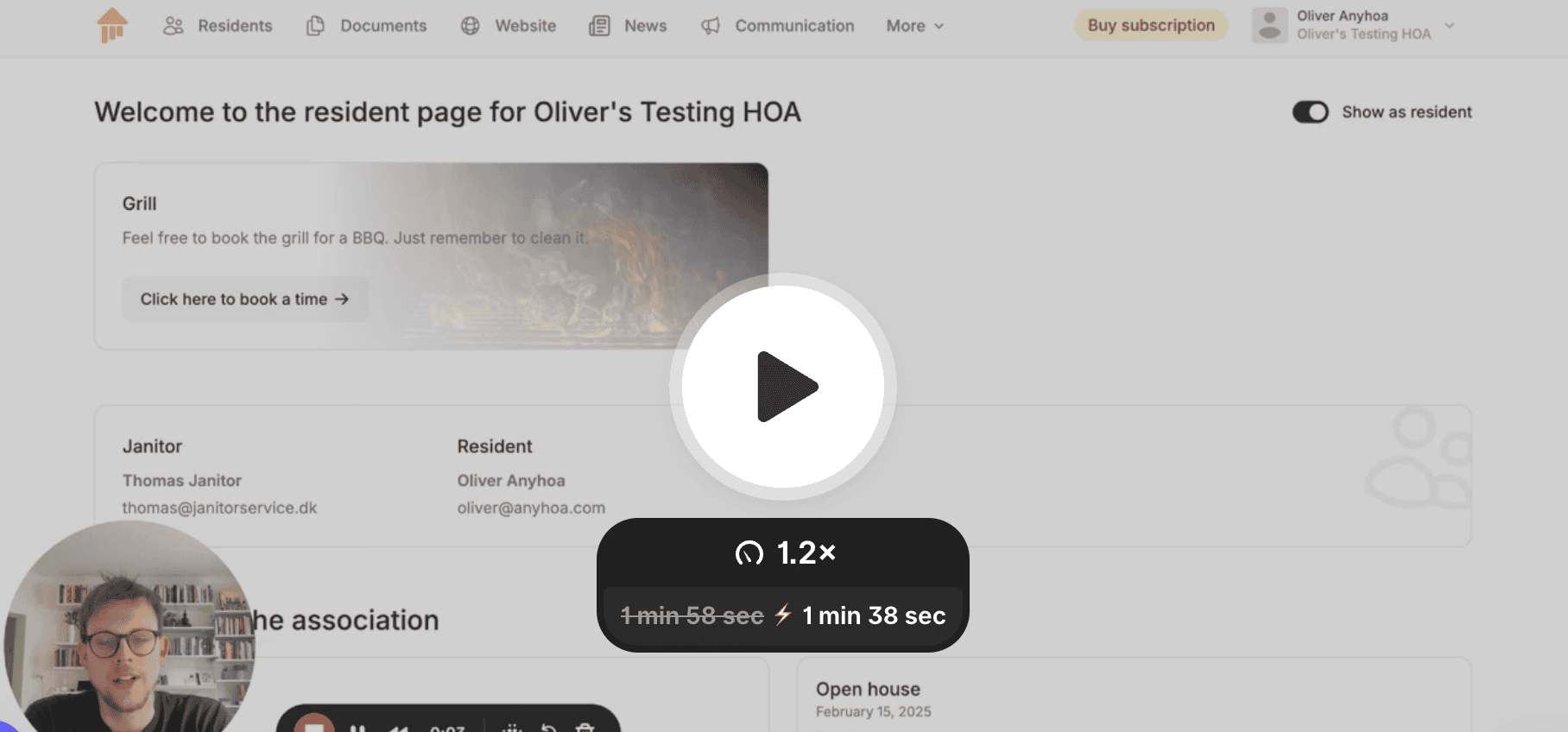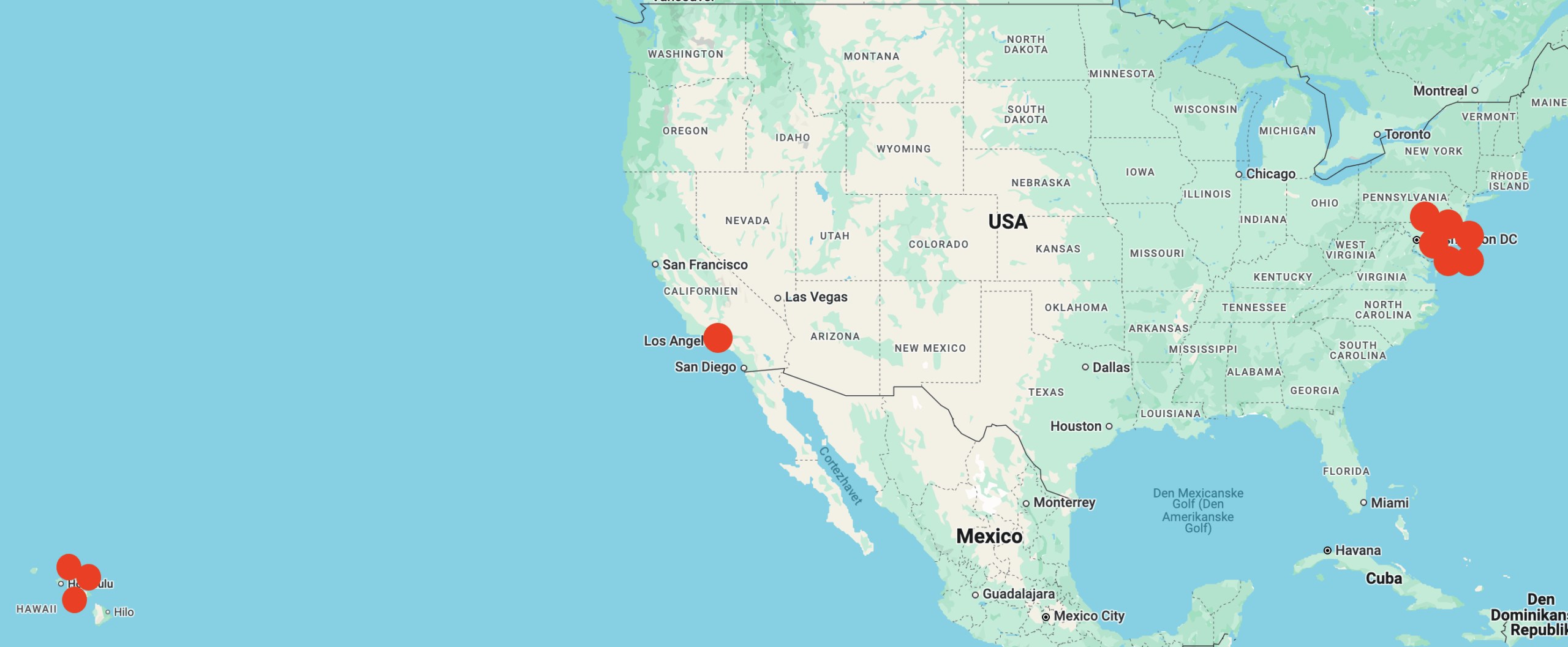How to ensure an effective and fair voting process in your HOA
Voting is an inevitable part of life in Homeowners Associations (HOAs), but it can quickly become complicated if not handled correctly. Whether it is a general assembly or board meeting where decisions need to be made, all residents should have an opportunity to voice their opinions. In this blog post, we guide you through how to ensure a fair and effective voting process in your HOA, and how you can use digital tools to streamline the procedure.

Key challenges in HOA voting
Voting can often lead to confusion or disputes, especially if the rules are not clear. Unclear or missing guidelines can lead to misunderstandings about who has the right to vote, how the votes are counted, and how decisions are made.
Furthermore, not all residents have experience attending a general assembly, so they may not be prepared for the voting process. It is in the HOA’s interest to ensure that all residents are well-prepared and know what is being voted on.
This lack of preparation often stems from inconsistent communication from the board and unclear guidelines for participation in the vote. In some cases, residents may not be fully aware of what decisions are up for voting, leading to confusion or lack of engagement. Clear communication about what is being voted on, when it will happen, and how the vote will be conducted can reduce this uncertainty. This can be achieved by sending out comprehensive pre-meeting information that outlines the decisions at hand and how the voting process will unfold.
Additionally, there’s the issue of timing. In some HOAs, voting is done in-person at general meetings, which can create issues for residents who are unable to attend due to personal or work commitments. This can result in low participation rates and undermine the legitimacy of the vote, especially when the quorum isn’t met. A possible solution is digital voting, which allows residents to participate in the vote without needing to be physically present at the meeting. By making voting more accessible, it also allows for better representation of all voices in the community, helping to avoid disputes over whether the vote truly reflects the collective will of the residents.

Transparency and accessibility
One of the biggest challenges in voting is the lack of transparency. If residents do not have a clear understanding of how the voting process will take place, it can create distrust and confusion. Additionally, conflicts can arise if it is unclear what is being voted on and how the decision will be made.
There are several rules for how voting is decided, such as quorum regulations and procedures for counting votes.
Another challenge is accessibility. In many HOAs, it can be difficult to ensure that all residents have the opportunity to participate in voting, especially if they are absent from meetings. The lack of options for digital participation can cause some residents to feel excluded.
According to a report from Denmark, Digitalization in the Real Estate Sector, digitalization in the real estate sector is still in its early stages, but there is growing pressure to implement digital solutions that can increase transparency and efficiency in decision-making processes.
In summary, it is crucial for the board to make it clear what is being voted on and how the voting is decided, but also to ensure maximum accessibility for voting. This can be achieved through digitalization or proxy voting.

Lack of transparency in voting
Lack of transparency is one of the most problematic challenges in HOA voting. When residents are unable to understand how a vote is conducted or how decisions are made, it can lead to a feeling of exclusion and distrust.
A study from Co-created Policy – Democratic Renewal in the Public Housing Sector highlights that a lack of transparency can lead to distrust in governing institutions. Another aspect of transparency is the internal communication from the board to the residents, which is critical to maintaining trust and engagement within the community.
Clear communication is key
To ensure transparency in voting, it is necessary for HOAs to clearly communicate the rules of the vote. All residents should know precisely how the vote works, what is being voted on, and how the results will be announced. This requires that the board makes it clear which decisions are being made through voting, and that they inform residents in advance about the procedures.
Such procedures should be documented and shared with residents through a digital document archive. An additional service from the board could be to attach the procedure to the agenda shared for the upcoming general assembly.
A report from Digital Focus for Renters and Homeowners in a Sustainable Society points out that digitalization can increase transparency in property transactions and decision-making processes, which can be applied to HOA voting systems.
Creating transparency means not only publishing the results of the vote but also ensuring that all residents understand the significance and consequences of the decisions made. Therefore, clear and open communication throughout the voting process is essential.

Accessibility in voting
Accessibility is another central aspect of voting in HOAs. Many HOAs face problems when not all residents are able to participate in voting, especially if they are absent from meetings.
Physical attendance at meetings can be a major barrier for many residents. This could be due to work schedules, illness, or other personal reasons that make it difficult to attend. As a result, a large portion of residents might miss the vote, creating an unfair decision-making process.
A real challenge is that many residents do not prioritize attending important meetings. If there are too few participants, the association risks having invalid votes. Therefore, the importance of the meeting is also crucial to ensure value creation from a general assembly.
Opportunities for greater accessibility
To ensure that all residents have the opportunity to participate in votes (or to make it as easy as possible for them), it can be necessary to make voting available online. A digital solution allows residents to participate, regardless of whether they are physically present. According to a report from Digitalization in the Real Estate Sector, digitalization in the sector is still quite new, but there is increasing pressure to implement digital solutions that can improve transparency and efficiency in decision-making processes.
Additionally, digitalizing voting also allows for automating the process, saving time for both the board and residents. When voting is online, residents can vote at a time that works for them, and the board immediately has a clear picture of the voting results without waiting for manual counting.
Is that enough?
Voting is an essential part of the decision-making process in HOAs, but it can be challenging if not handled correctly. By establishing clear guidelines, using digital solutions, and ensuring transparency, you can make voting more efficient and fair for all residents.
Another perspective we have not yet discussed is how to ensure that elderly residents in the HOA are heard. Digital solutions are not always the right answer for all problems, but it is a constant balancing act to determine what options the board has.
So no, it’s not enough just to implement digital solutions, as there is a risk of losing some residents along the way. However, a clear communication from the board to the residents about what is to be voted for and what it means for the association is key.
What does Anyhoa offer?
Anyhoa offers a digital platform where much of the HOA’s operations can be digitized. Digital document archives for procedures can help make voting easier to manage. Additionally, you can send procedures out with the invitations for the next general assembly.
Try Anyhoa today and see how we can help your HOA ensure an efficient and fair voting process.
